Not long ago, foxes native to the Channel Islands off the California coast teetered on the edge of extinction. They have rebounded to the point where U.S. wildlife officials on Thursday removed three subspecies of island fox from the roster of federally endangered species, hailing their comeback as the fastest recovery of any mammal listed under the Endangered Species Act. The diminutive foxes that roam San Miguel, Santa Rosa and Santa Cruz islands were placed on the endangered list in 2004 after their populations were nearly wiped out by golden eagles. Scientists credited the swift recovery to an effort to relocate predators and breed foxes in captivity so they can be reintroduced to the wild. About the size of a house cat, the island foxes – with their gray coats and reddish-brown ears – are only found on six of the eight Channel Islands where they have lived for thousands of years. Populations have returned to self-sustaining levels ranging from an estimated 700 foxes on San Miguel Island to 2,100 foxes on Santa Cruz Island. Centuries ago, ranchers and farmers imported nonnative animals such as pigs, cattle and sheep to the islands. Golden eagles migrated after native, fish-eating bald eagles were wiped out by the discharge of chemical DDT off the coast. The golden eagles preyed on piglets and hunted foxes. By 2000, there were only 15 foxes each on San Miguel and Santa Rosa islands and 55 foxes on Santa Cruz Island. The wildlife service partnered with the National Park Service, Nature Conservancy and Catalina Island Conservancy to hatch an aggressive plan that included moving golden eagles to Northern California, reintroducing bald eagles to the islands, vaccinating foxes and breeding them in captivity. The effort was not without controversy. Thousands of pigs were shot and killed, angering animal rights groups. Wildlife officials said eliminating pigs was necessary to force golden eagles to forage elsewhere and help the foxes bounce back. With the fox delisting, 19 animals and plants have been pulled from the endangered species list since President Barack Obama took office, more than previous administrations, wildlife service director Dan Ashe said. The last U.S. mammal to be removed from the list in record time was the eastern Steller sea lion in 2013 after more than two decades. Since the Endangered Species Act passed in 1973, 37 species have recovered.
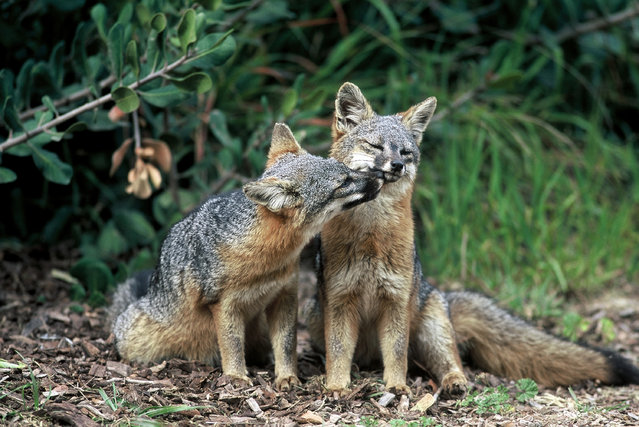
This undated photo provided by the U.S. Fish and Wildlife Service shows two island foxes in Channel Islands National Park, Calif. Three fox subspecies native to California's Channel Islands were removed from the list of endangered species Thursday, August 11, 2016, in what federal officials have called the fastest recovery of any mammal listed under the Endangered Species Act. (Photo by Chuck Graham/U.S. Fish and Wildlife Service via AP Photo)
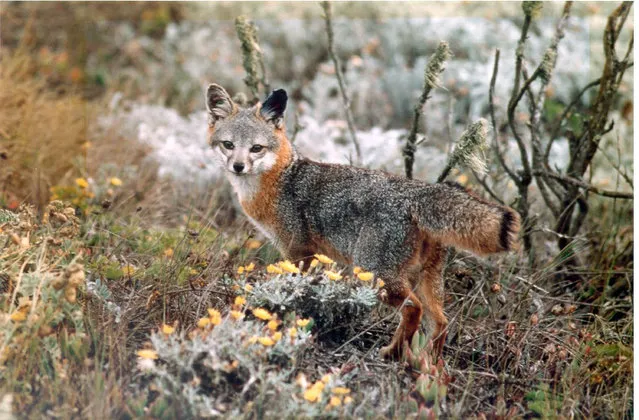
This undated photo provided by the U.S. Fish and Wildlife Service shows an island fox amid native shrubbery in Channel Islands National Park, Calif. (Photo by Chuck Graham/U.S. Fish and Wildlife Service via AP Photo)
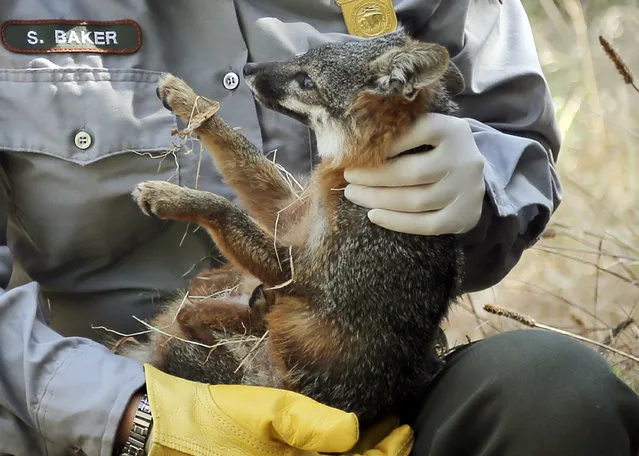
After being trapped for examination, biological science technician Stacy Baker examines an approximately 3-year-old female island fox prior to its release back into the wild on Santa Cruz Island in Channel Islands National Park, Calif., Thursday, August 11, 2016. (Photo by Reed Saxon/AP Photo)
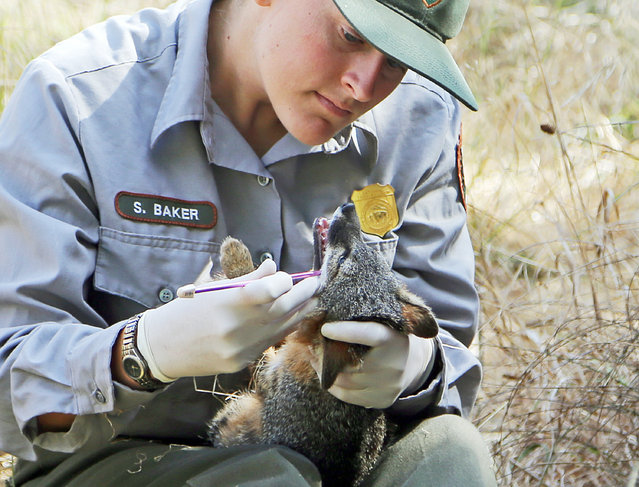
After being trapped for examination, biological science technician Stacy Baker examines an approximately 3-year-old female island fox prior to its release back into the wild on Santa Cruz Island in Channel Islands National Park, Calif., Thursday, August 11, 2016. (Photo by Reed Saxon/AP Photo)
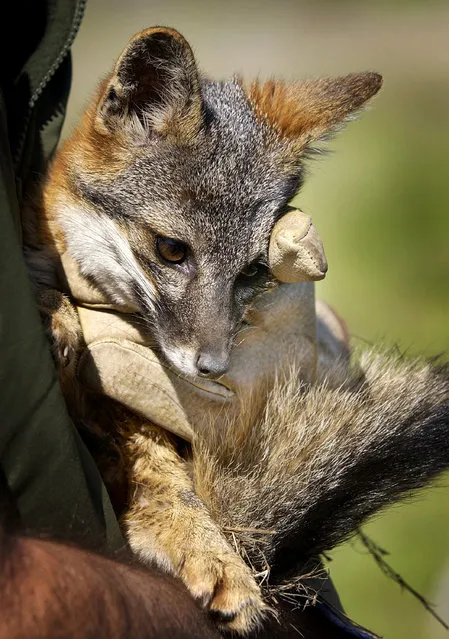
This March 4, 2004 file photo shows a Santa Cruz Island fox bred in captivity being held by a wildlife biologist for the National Park Service, on Santa Cruz Island in Channel Islands National Park, Calif. (Photo by Reed Saxon/AP Photo)
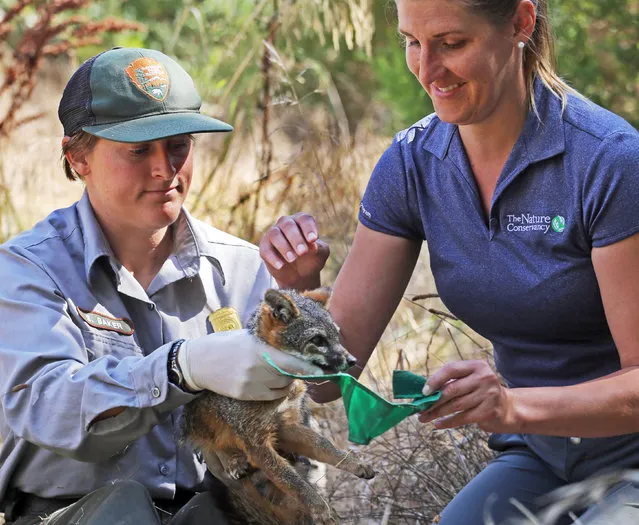
After being examined, biological science technician Stacy Baker, left, and Christie Boser, Nature Conservancy ecologist, prepare to release an approximately 3-year-old female island fox back into the wild on Santa Cruz Island in Channel Islands National Park, Calif., Thursday, August 11, 2016. (Photo by Reed Saxon/AP Photo)
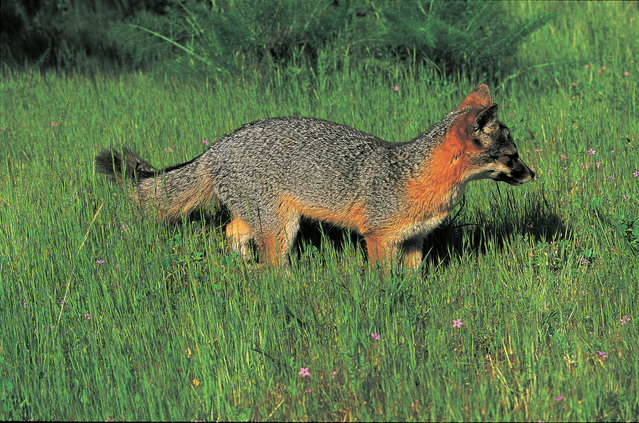
This undated photo provided by the U.S. Fish and Wildlife Service shows an island fox in Channel Islands National Park, Calif. (Photo by Tim Hauf/U.S. Fish and Wildlife Service via AP Photo)

This undated photo provided by the U.S. Fish and Wildlife Service shows two island foxes in Channel Islands National Park, Calif. Three fox subspecies native to California's Channel Islands were removed from the list of endangered species Thursday, August 11, 2016, in what federal officials have called the fastest recovery of any mammal listed under the Endangered Species Act. (Photo by Chuck Graham/U.S. Fish and Wildlife Service via AP Photo)

This undated photo provided by the U.S. Fish and Wildlife Service shows an island fox amid native shrubbery in Channel Islands National Park, Calif. (Photo by Chuck Graham/U.S. Fish and Wildlife Service via AP Photo)

After being trapped for examination, biological science technician Stacy Baker examines an approximately 3-year-old female island fox prior to its release back into the wild on Santa Cruz Island in Channel Islands National Park, Calif., Thursday, August 11, 2016. (Photo by Reed Saxon/AP Photo)

After being trapped for examination, biological science technician Stacy Baker examines an approximately 3-year-old female island fox prior to its release back into the wild on Santa Cruz Island in Channel Islands National Park, Calif., Thursday, August 11, 2016. (Photo by Reed Saxon/AP Photo)

This March 4, 2004 file photo shows a Santa Cruz Island fox bred in captivity being held by a wildlife biologist for the National Park Service, on Santa Cruz Island in Channel Islands National Park, Calif. (Photo by Reed Saxon/AP Photo)

After being examined, biological science technician Stacy Baker, left, and Christie Boser, Nature Conservancy ecologist, prepare to release an approximately 3-year-old female island fox back into the wild on Santa Cruz Island in Channel Islands National Park, Calif., Thursday, August 11, 2016. (Photo by Reed Saxon/AP Photo)

This undated photo provided by the U.S. Fish and Wildlife Service shows an island fox in Channel Islands National Park, Calif. (Photo by Tim Hauf/U.S. Fish and Wildlife Service via AP Photo)
12 Aug 2016 12:04:00,
post received
0 comments
